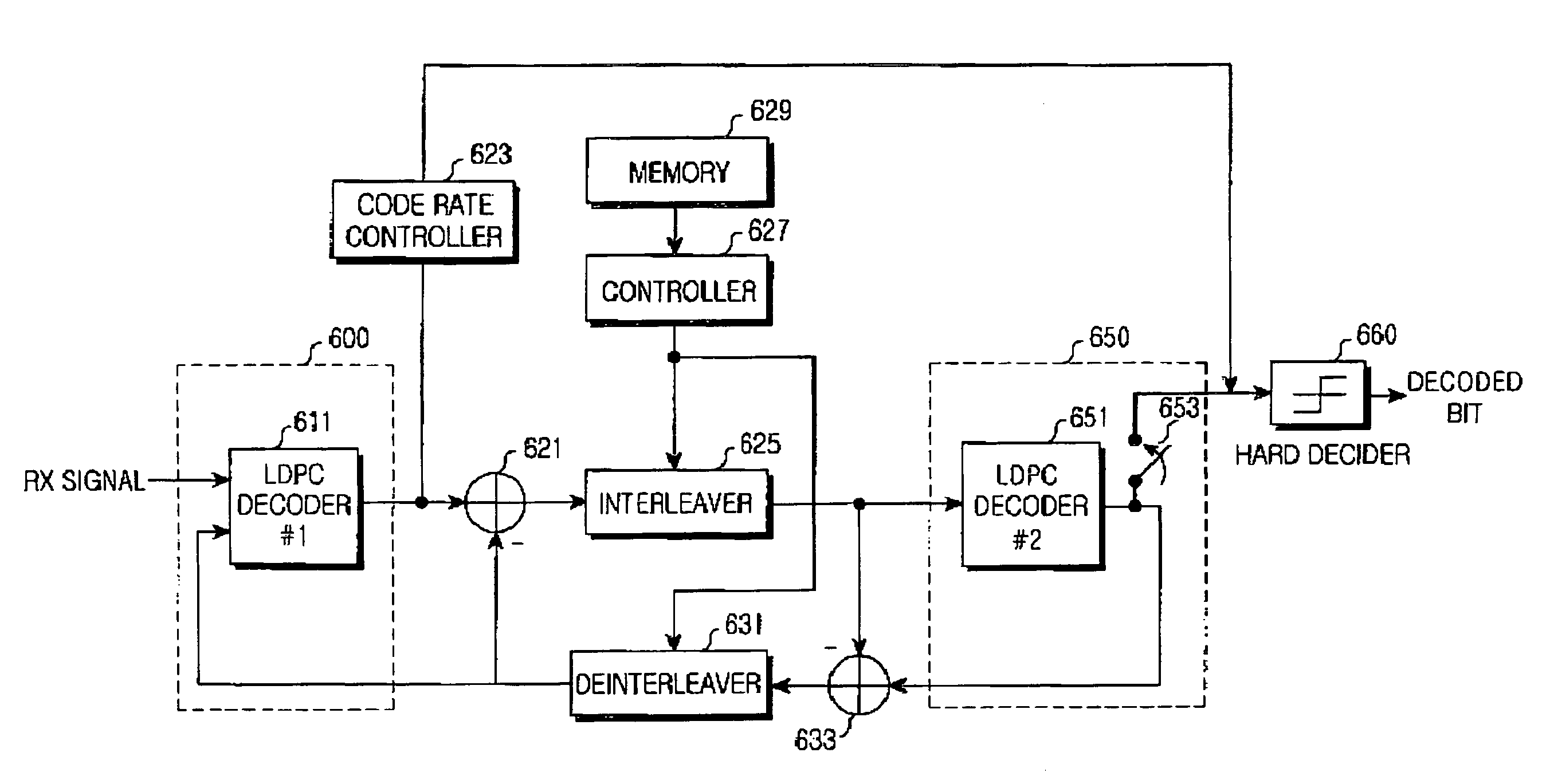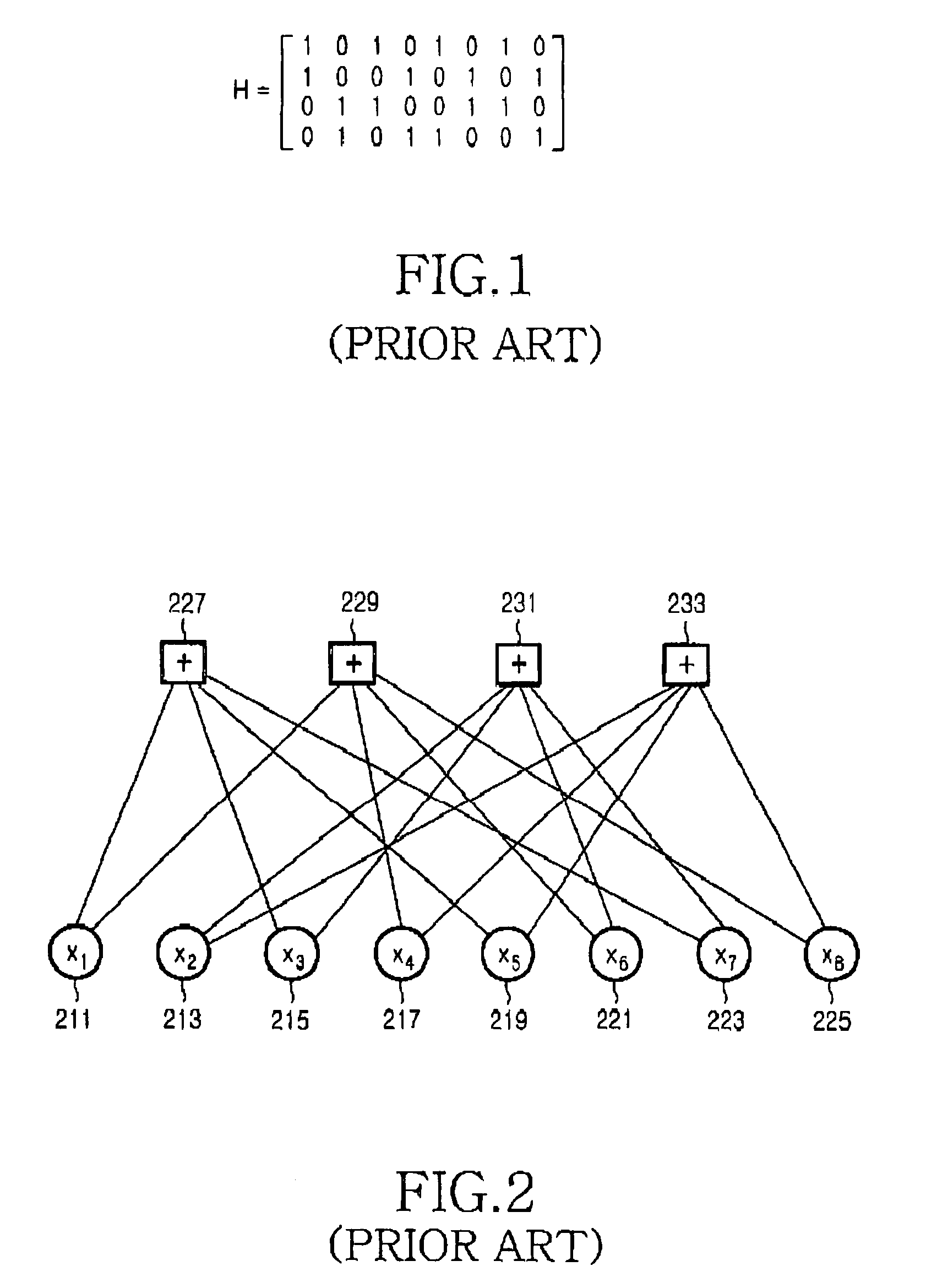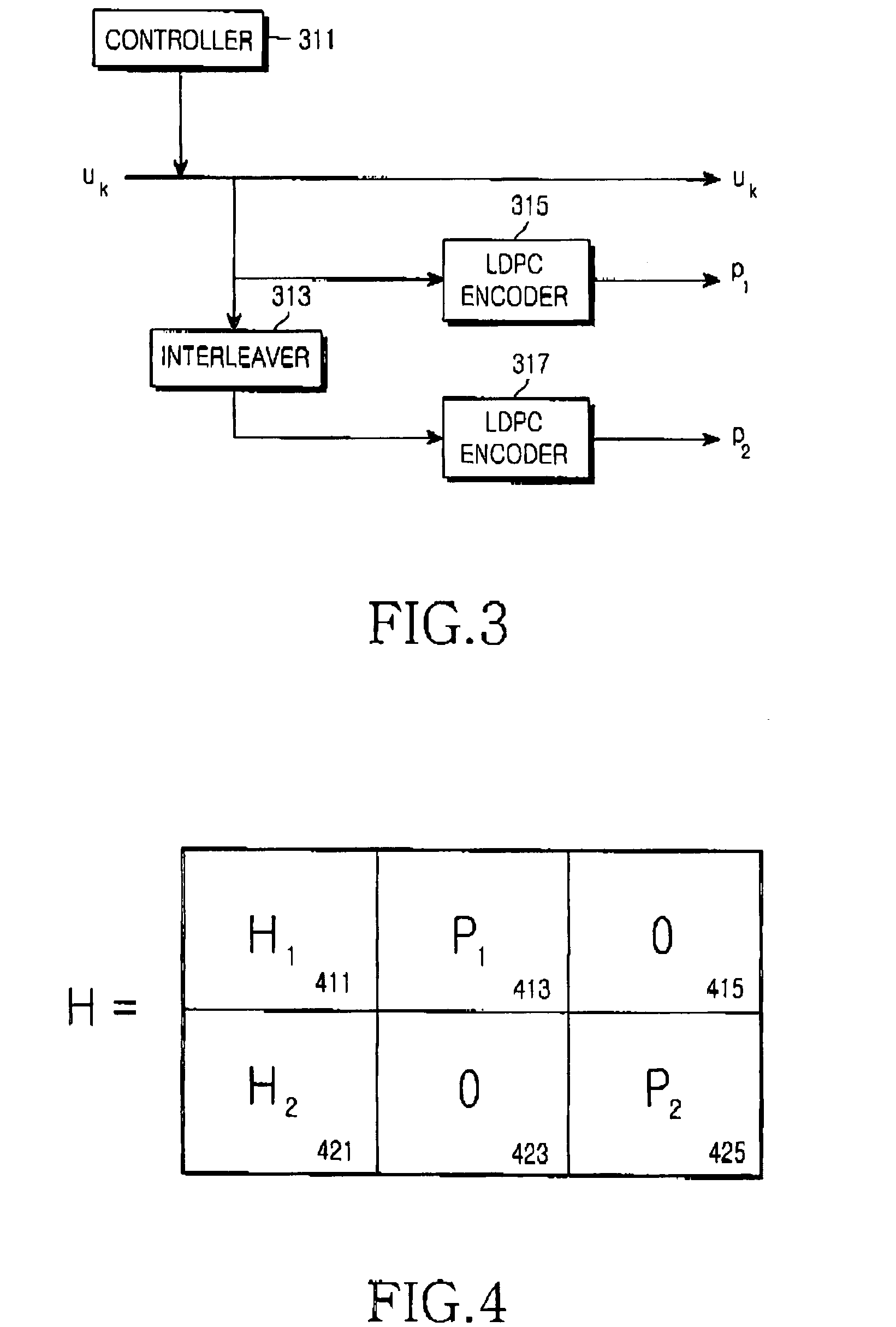Channel encoding/decoding apparatus and method using a parallel concatenated low density parity check code
a channel encoding/decoding and low density parity technology, applied in the direction of coding, instruments, code conversion, etc., can solve the problems of inability to provide detailed channel encoding/decoding methods for supporting data rates, mobile communication systems that experience errors inevitably, and achieve the effect of improving the performance of parallel concatenated ldpc codes
- Summary
- Abstract
- Description
- Claims
- Application Information
AI Technical Summary
Benefits of technology
Problems solved by technology
Method used
Image
Examples
Embodiment Construction
[0050]A preferred embodiment of the present invention will now be described in detail with reference to the annexed drawings. In the following description, a detailed description of known functions and configurations incorporated herein has been omitted for conciseness.
[0051]The present invention proposes an apparatus and method for encoding / decoding a channel signal using a parallel concatenated low density parity check (LDPC) code capable of supporting various code rates. In the various schemes proposed to reliably transmit / receive a large volume of data at high speed, such as a Hybrid Automatic Retransmission Request (HARQ) scheme and an Adaptive Modulation and Coding (AMC) scheme, various code rates must be supported. Therefore, the present invention proposes a channel encoding / decoding apparatus and method using the parallel concatenated LDPC code, being capable of supporting a variable code rate. In order to maximize performance of the parallel concatenated LDPC code, the pres...
PUM
 Login to View More
Login to View More Abstract
Description
Claims
Application Information
 Login to View More
Login to View More - R&D
- Intellectual Property
- Life Sciences
- Materials
- Tech Scout
- Unparalleled Data Quality
- Higher Quality Content
- 60% Fewer Hallucinations
Browse by: Latest US Patents, China's latest patents, Technical Efficacy Thesaurus, Application Domain, Technology Topic, Popular Technical Reports.
© 2025 PatSnap. All rights reserved.Legal|Privacy policy|Modern Slavery Act Transparency Statement|Sitemap|About US| Contact US: help@patsnap.com



